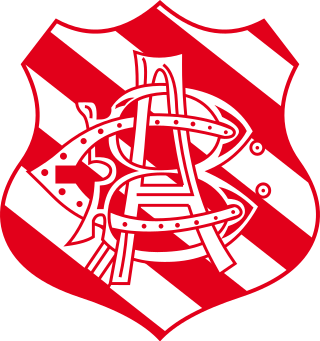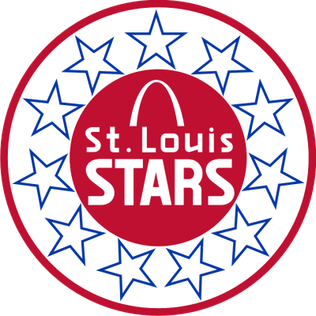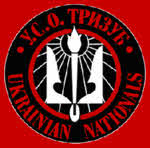
The North American Soccer League (NASL) was the top-level major professional soccer league in the United States and Canada that operated from 1968 to 1984. It was the first soccer league to be successful on a national scale in the United States. The league final was called the Soccer Bowl from 1975 to 1983 and the Soccer Bowl Series in its final year, 1984. The league was headed by Commissioner Phil Woosnam from 1969 to 1983. The NASL laid the foundations for soccer in the United States that helped lead to the country hosting the 1994 FIFA World Cup and the set-up of Major League Soccer (MLS) in 1996.

Dukla Prague was a Czech football club from the city of Prague. Established in 1948 as ATK Praha, the club won a total of 11 Czechoslovak league titles and eight Czechoslovak Cups, and in the 1966–67 season, reached the semi-finals of the European Cup. As late as 1985–86 they reached the UEFA Cup Winners' Cup semi-final and they also made a great impact in the American Challenge Cup competition in New York City with four wins between 1961 and 1964. The club sent seven players to the silver medal-winning Czechoslovakia national team in the 1962 World Cup, in a year which saw them win the fifth of their domestic league titles as well as their player Josef Masopust be named European Footballer of the Year. Between the start of the competition in 1955 and 1991, Dukla played more matches in the European Cup than any other team in Czechoslovakia.

The United States soccer league system is a series of professional and amateur soccer leagues based, in whole or in part, in the United States. Sometimes called the American soccer pyramid, teams and leagues are not linked by the system of promotion and relegation typical in soccer elsewhere. Instead, the United States Soccer Federation defines professional leagues in three levels, called divisions, with all other leagues sanctioned by the USSF not having an official designated level or division.

The United Soccer Association (USA) was a professional soccer league featuring teams based in the United States and Canada. The league survived only one season before merging with the National Professional Soccer League to form the North American Soccer League. Every team in the league was actually an imported European or South America club, that was then outfitted with a "local" name. Dick Walsh served as the commissioner.
The Los Angeles Wolves were an American professional soccer team that played for two seasons. In 1967 they played in the United Soccer Association, finishing as champions, and in 1968 they were founding members of the North American Soccer League.

Bangu Atlético Clube, commonly known as Bangu, is a Brazilian professional association football club based in Rio de Janeiro, in the western neighbourhood of Bangu. The team plays in Série D, the fourth tier of the Brazilian football league system, as well as in the Campeonato Carioca, the top tier of the Rio de Janeiro state football league.

The Atlanta Chiefs were an American professional soccer team based in Atlanta, Georgia. The team competed in the National Professional Soccer League (NPSL) in 1967 and the North American Soccer League (NASL) from 1968 to 1973 and again from 1979 to 1981. For the 1973 season, the team played as the Atlanta Apollos.

The St. Louis Stars were a soccer team based in St. Louis, Missouri that played in the original North American Soccer League from 1968 to 1977. The Stars were known for playing mostly American players, many from the St. Louis area, in contrast to other NASL teams' reliance on foreign players. The team moved to Anaheim in 1978 and became the California Surf.

Team America was a professional version of the United States men's national soccer team which played as a franchise in the North American Soccer League (NASL) during the 1983 season. The team was based in Washington, D.C., played its home games at RFK Stadium, and was intended by the NASL and the United States Soccer Federation to build fan support for the league and create a cohesive and internationally competitive national team. However, the team finished in last place and drew only 13,000 fans per game.

The first Philadelphia Ukrainians team, also known as the "Philadelphia Tridents", Tryzub FC, was an American soccer club based in Philadelphia, Pennsylvania and was a member of the American Soccer League. The Ukrainian Nationals were six (6) time American Soccer League Champions: in 1960-61, 1961–62, 1962–63, 1963–64, 1967–68 and 1970. The team's colors are red and black. The Philadelphia Ukrainian Nationals were the first team in United States history to have home games televised, and played in the first regulation indoor soccer game in Atlantic City's Convention Center in New Jersey.
John Kerr Sr. was a North American Soccer League soccer midfielder. Born in Scotland, he played for the Canada men's national team.

The San Jose Earthquakes were a professional soccer club that played from 1974 to 1988. The team began as an expansion franchise in the North American Soccer League (NASL), and was originally set to play in San Francisco; but slow season ticket sales led to a late switch to San Jose's Spartan Stadium. The switch to sports-starved San Jose was an immediate hit, and the Earthquakes led the league with attendance over 15,000 per game in 1974, double the league average. The team's success led Spartan Stadium to be chosen as site of the first NASL Soccer Bowl in 1975. From 1983 to 1984, the team was known as the Golden Bay Earthquakes. During this time, it also played in the original Major Indoor Soccer League and in the NASL's indoor circuit, winning the first ever NASL indoor tournament in 1975. Their indoor games were first played at the Cow Palace and later at the Oakland Coliseum Arena.
The National Professional Soccer League (NPSL) was a North American professional soccer league that existed for only the 1967 season before merging with the United Soccer Association (USA) to form the North American Soccer League. It had ten charter members, nine from the United States and one from Canada. To encourage attacking play, the NPSL introduced a new standings points system that was later used by the NASL – 6 points for a win, 3 for a draw, 0 for a loss and 1 bonus point for each of the first three goals scored. The circuit's commissioner was Ken Macker, an American publisher of three Philippines-based newspapers. The name National Professional Soccer League was revived in 1990 and used by a United States professional indoor soccer league.
Statistics of North American Soccer League in season 1976. This was the 9th season of the NASL.
The 1968 North American Soccer League season was the 56th season of FIFA-sanctioned soccer in the United States and Canada, and the 1st with a national first-division league with the inaugural season of the NASL.
The 1969 North American Soccer League season was the second season of the North American Soccer League, the top division in US soccer in 1969.
Melvyn Douglas Scott was an English professional footballer who played as a centre half in the Football League for Brentford and Chelsea. He was capped by England at youth and U23 level.

Rubén Navarro was an Argentine association football player. He is mainly remembered for winning two consecutive Copa Libertadores titles with Independiente.
Soccer in the United States has a varied history. Research indicates that the modern game entered the country during the 1850s with New Orleans' Scottish, Irish, German and Italian immigrants. Some of the first organized games, using modern English rules, were played in that city.












